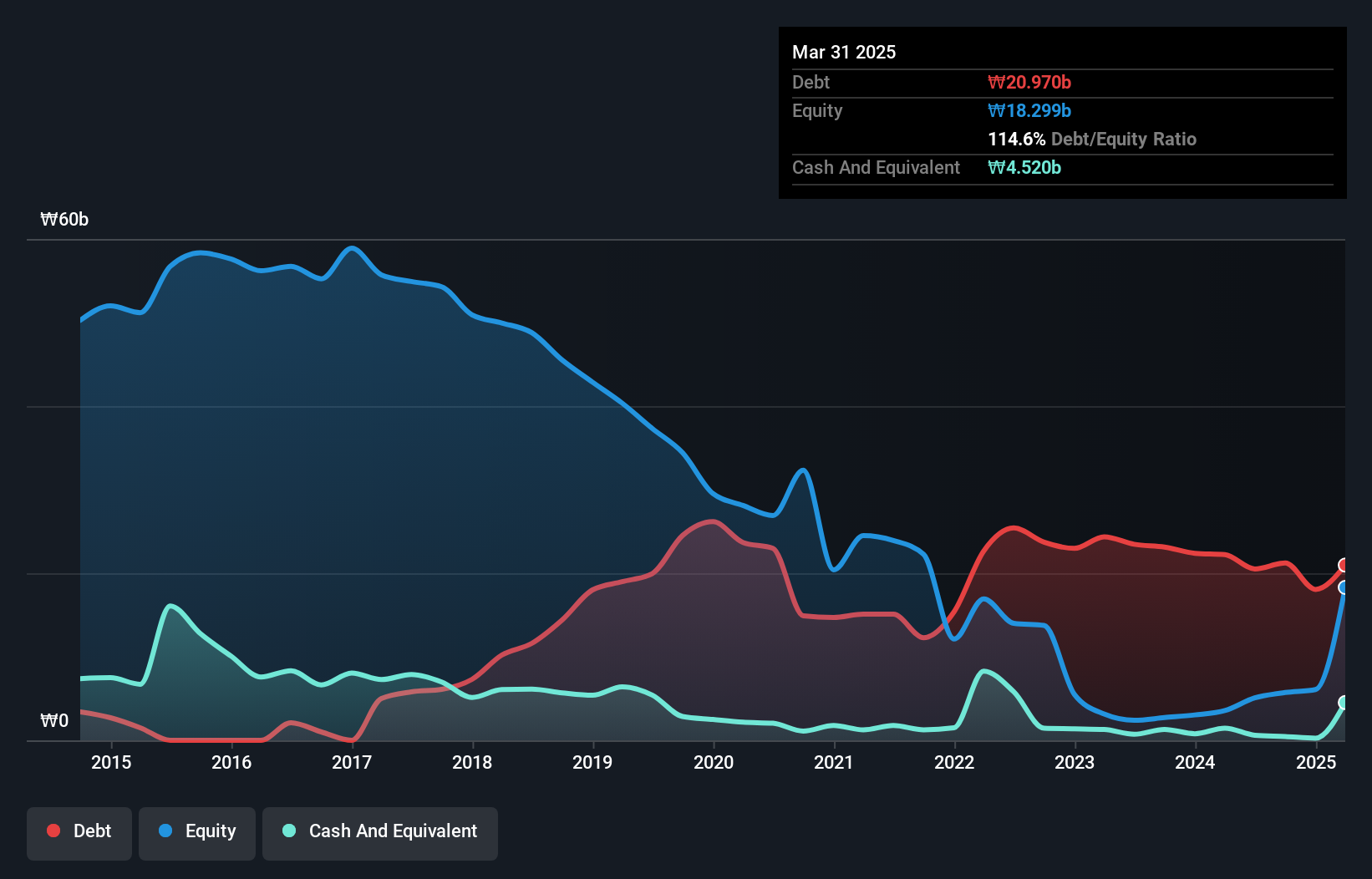- South Korea
- /
- Luxury
- /
- KOSE:A008500
Iljeong IndustrialLtd (KRX:008500) Has A Pretty Healthy Balance Sheet
Legendary fund manager Li Lu (who Charlie Munger backed) once said, 'The biggest investment risk is not the volatility of prices, but whether you will suffer a permanent loss of capital.' So it might be obvious that you need to consider debt, when you think about how risky any given stock is, because too much debt can sink a company. Importantly, Iljeong Industrial Co.,Ltd (KRX:008500) does carry debt. But is this debt a concern to shareholders?
When Is Debt Dangerous?
Debt and other liabilities become risky for a business when it cannot easily fulfill those obligations, either with free cash flow or by raising capital at an attractive price. If things get really bad, the lenders can take control of the business. However, a more common (but still painful) scenario is that it has to raise new equity capital at a low price, thus permanently diluting shareholders. Of course, debt can be an important tool in businesses, particularly capital heavy businesses. When we examine debt levels, we first consider both cash and debt levels, together.
What Is Iljeong IndustrialLtd's Net Debt?
You can click the graphic below for the historical numbers, but it shows that Iljeong IndustrialLtd had ₩21.0b of debt in March 2025, down from ₩22.2b, one year before. On the flip side, it has ₩4.52b in cash leading to net debt of about ₩16.5b.

How Healthy Is Iljeong IndustrialLtd's Balance Sheet?
Zooming in on the latest balance sheet data, we can see that Iljeong IndustrialLtd had liabilities of ₩18.1b due within 12 months and liabilities of ₩8.16b due beyond that. Offsetting these obligations, it had cash of ₩4.52b as well as receivables valued at ₩6.48b due within 12 months. So it has liabilities totalling ₩15.3b more than its cash and near-term receivables, combined.
This is a mountain of leverage relative to its market capitalization of ₩17.0b. Should its lenders demand that it shore up the balance sheet, shareholders would likely face severe dilution.
View our latest analysis for Iljeong IndustrialLtd
We use two main ratios to inform us about debt levels relative to earnings. The first is net debt divided by earnings before interest, tax, depreciation, and amortization (EBITDA), while the second is how many times its earnings before interest and tax (EBIT) covers its interest expense (or its interest cover, for short). This way, we consider both the absolute quantum of the debt, as well as the interest rates paid on it.
Iljeong IndustrialLtd has a debt to EBITDA ratio of 4.1, which signals significant debt, but is still pretty reasonable for most types of business. But its EBIT was about 10.8 times its interest expense, implying the company isn't really paying a high cost to maintain that level of debt. Even were the low cost to prove unsustainable, that is a good sign. Notably, Iljeong IndustrialLtd's EBIT launched higher than Elon Musk, gaining a whopping 988% on last year. The balance sheet is clearly the area to focus on when you are analysing debt. But it is Iljeong IndustrialLtd's earnings that will influence how the balance sheet holds up in the future. So if you're keen to discover more about its earnings, it might be worth checking out this graph of its long term earnings trend.
Finally, while the tax-man may adore accounting profits, lenders only accept cold hard cash. So we clearly need to look at whether that EBIT is leading to corresponding free cash flow. Over the last two years, Iljeong IndustrialLtd actually produced more free cash flow than EBIT. That sort of strong cash conversion gets us as excited as the crowd when the beat drops at a Daft Punk concert.
Our View
The good news is that Iljeong IndustrialLtd's demonstrated ability to convert EBIT to free cash flow delights us like a fluffy puppy does a toddler. But the stark truth is that we are concerned by its net debt to EBITDA. All these things considered, it appears that Iljeong IndustrialLtd can comfortably handle its current debt levels. On the plus side, this leverage can boost shareholder returns, but the potential downside is more risk of loss, so it's worth monitoring the balance sheet. The balance sheet is clearly the area to focus on when you are analysing debt. But ultimately, every company can contain risks that exist outside of the balance sheet. For example, we've discovered 3 warning signs for Iljeong IndustrialLtd (2 are a bit concerning!) that you should be aware of before investing here.
If, after all that, you're more interested in a fast growing company with a rock-solid balance sheet, then check out our list of net cash growth stocks without delay.
New: AI Stock Screener & Alerts
Our new AI Stock Screener scans the market every day to uncover opportunities.
• Dividend Powerhouses (3%+ Yield)
• Undervalued Small Caps with Insider Buying
• High growth Tech and AI Companies
Or build your own from over 50 metrics.
Have feedback on this article? Concerned about the content? Get in touch with us directly. Alternatively, email editorial-team (at) simplywallst.com.
This article by Simply Wall St is general in nature. We provide commentary based on historical data and analyst forecasts only using an unbiased methodology and our articles are not intended to be financial advice. It does not constitute a recommendation to buy or sell any stock, and does not take account of your objectives, or your financial situation. We aim to bring you long-term focused analysis driven by fundamental data. Note that our analysis may not factor in the latest price-sensitive company announcements or qualitative material. Simply Wall St has no position in any stocks mentioned.
About KOSE:A008500
Iljeong IndustrialLtd
Iljeong Industrial Co.Ltd. provides car seat fabrics to automobile makers in Korea.
Low risk with questionable track record.
Market Insights
Community Narratives



